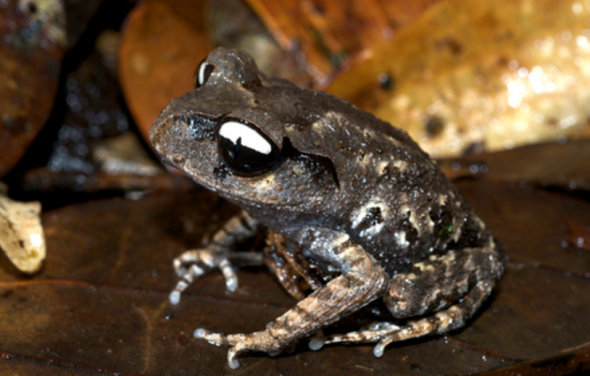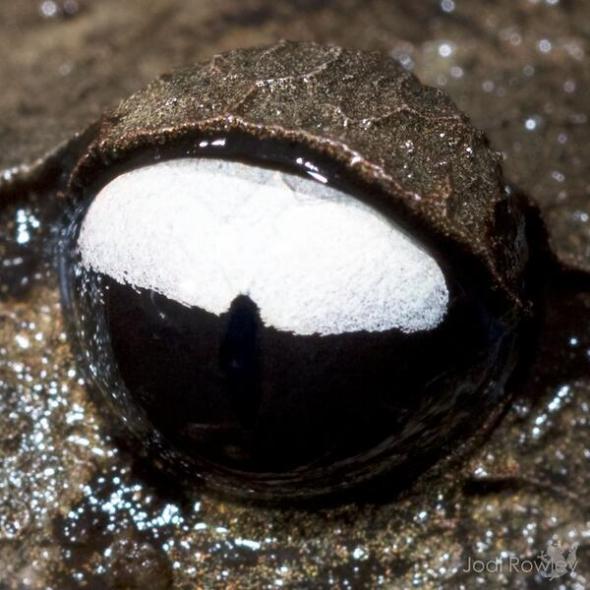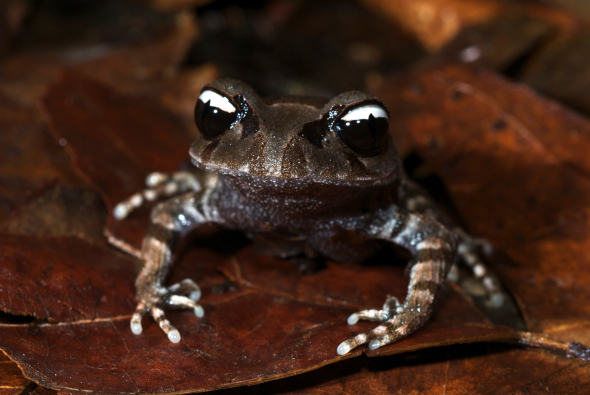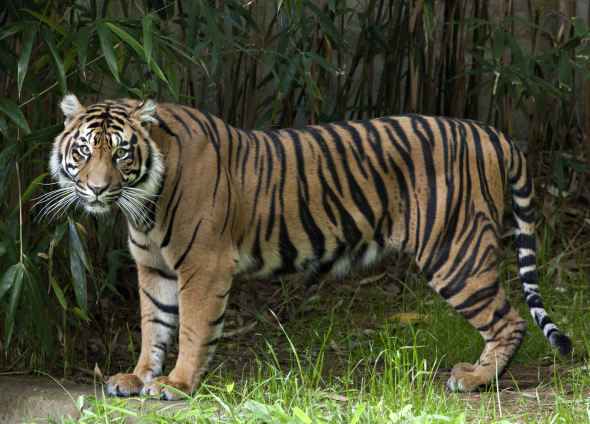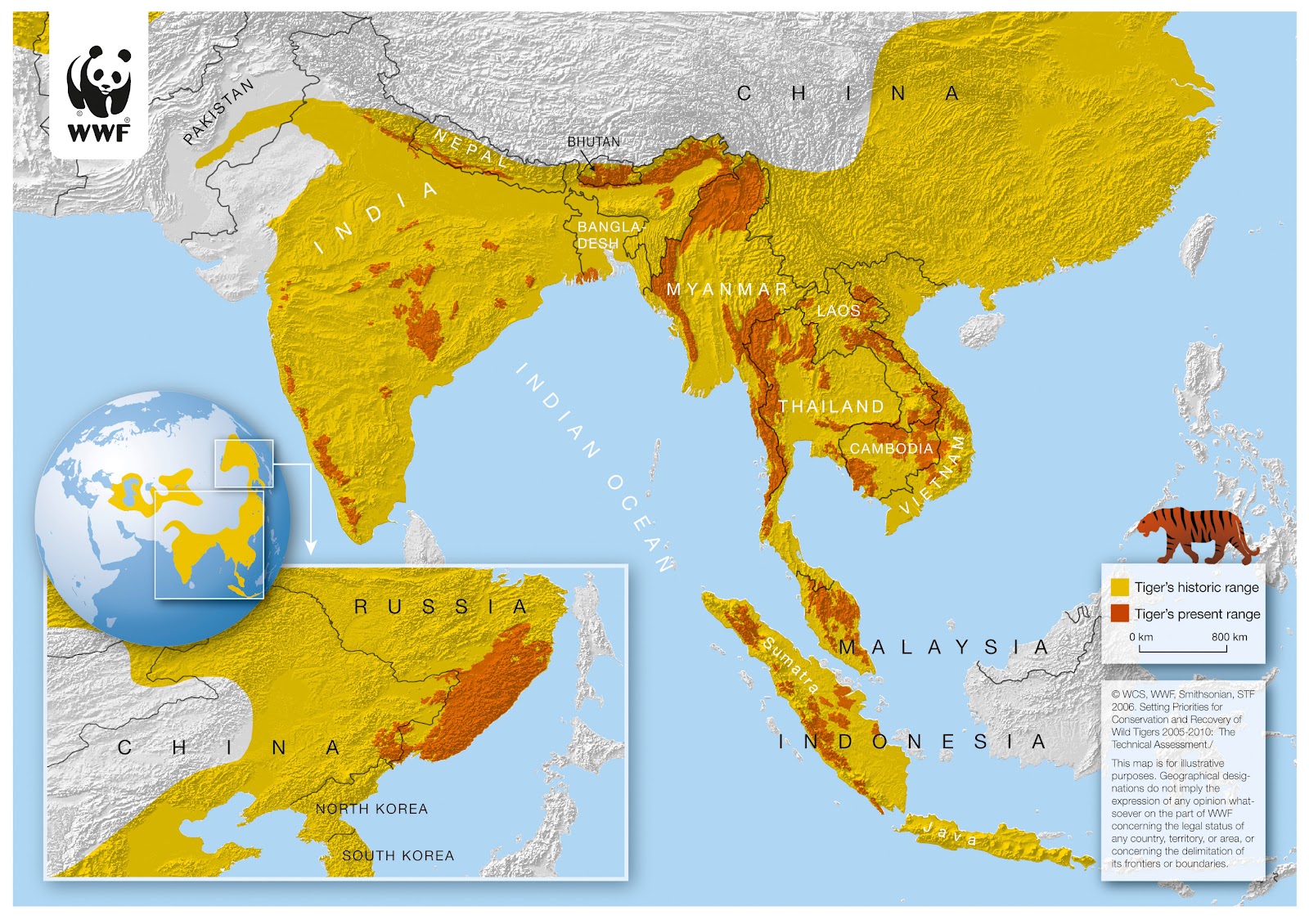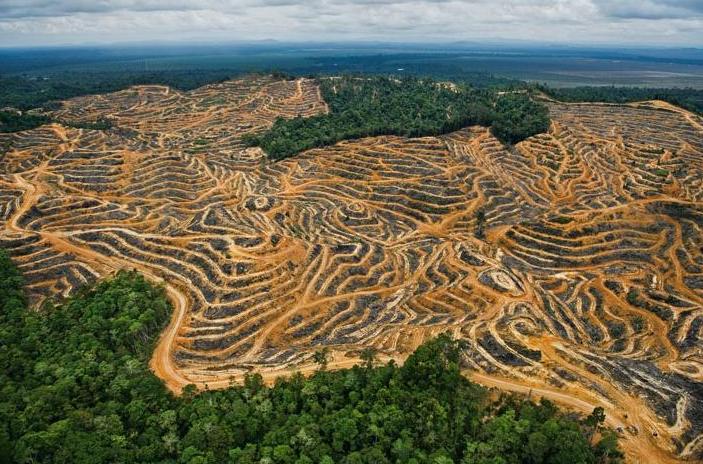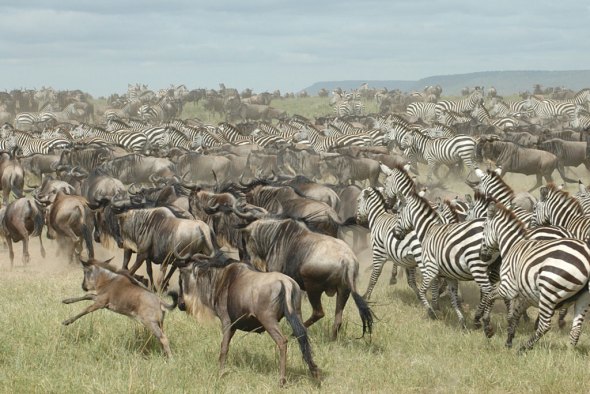Environmentalism Chapter 44 - Habitat Fragmentation
Habitual fragmentation is now the leading cause of concern regarding the nearing extinction of animals to colossal destruction of forests totalling exactly 80% of our flora and fauna internationally. This total is vast in size and there seems to be no decrease or plans implemented by governments to now slow the ever increasing environmental carnage down that’s killing and displacing many species of large and small mammals to tree‘s plant‘s, insects and micro-organisms that reside on 22.29% of the earths surface and 70% marine to fresh water. A total coverage of 196.9 million square miles of earth to date is under threat.
Habitat fragmentation is not being professionally addressed by government environmental agencies, ministries of water and affairs, transport authorities to public health. The Ministry of Defence too could also play a pivotal role in reducing environmental carnage that could cut human displacement down on a massive scale, by, “talking” instead of sending war head’s and troops to nuclear armed nations.
Conflicts only destroy more land, displace animals and human’s taking decades to rejuvenate these areas and increase economy thus decreasing crime. By this time the species of animals within these area’s have already been pushed to extinction. The Malian Elephant is now being poached although in small numbers due to their fairly small tusks as of the retched poverty stricken refugee camps that are set up when war occurs. Wildlife crime is seen as one of the only incomes.
Raging war’s regrettably displaces innocent civilians and animals caught in the middle of conflict zones thus moving them onto non-human non-habituated land that in turn pushes species of animals into other areas starting the ecological destruction circle of again, causing human and species conflict, thus increasing the destructive illegal wildlife trade ranging from Elephant’s to Rhinoceros, and Wild Felids to forests completely uprooted killing thousands of animals and medicinal plants.
Medicinal plants are important to both human and [animal] health of which also reduces the need for more species of primates, canines, felines to many more animals mostly domesticated being forced into a life of complete misery within experimental laboratories from which scientist’s and pharmacologists, to neurologists trial synthetic medication on.
The need for natural medicinal plant’s is so important within human and animal health too as they lack side affects of which “synthetic pharmaceuticals medicines” such as Dixarit, Chlorpromazine, Aripiprazole, NAISDS and more cause many secondary side effect’s within the human body, mostly gastrointestinal and central nervous system.
Knowing that habitual destruction and climate change that’s now more commonly known as “global cooling” is indeed affecting our environment and it’s natural inhabitants one would of believed that the not so caring government’s would now take this matter of serious concern up. However they are treating it as a taboo subject to merely passing the problems of on to non-profit and non-governmental rescue organisations and environmental units, universities and scientists alike that are struggling with public funding as it is or simply cannot cope with the spurge of destruction just for one species alone.
Picture below shows populations of Tigers and the historical loss of habitat that is now affecting many wild Tiger populations that are estimated in all at a depressing 3,600 if that. The Amur Tiger is only listed as 39 and has not been viewed within the wild for many years now feared possibly extinct. The Sumatran Tiger’s populations are decreasing because of palm, paper and pulp trade currently populated at a mere 500 although the last population census showed a “slight” increase since environmental investigations began within the area of Malaysia and Indonesia that had been conducted with the RSPO working to now eliminate violating companies although this is a very slow and costly process.
Habitat Fragmentation simply is;
Habitat fragmentation, as the name implies, describes the emergence of discontinuities (fragmentation) in an organism’s preferred environment (habitat), causing population fragmentation. Habitat fragmentation can be caused by geological processes that slowly alter the layout of the physical environment (suspected of being one of the major causesof speciation, or by human activity such as land conversion, which can alter the environment much faster and causes extinctions of many species.
There are many other factors that are responsible for habitat fragmentation too that are listed below;
Human overpopulation - 1960 saw an estimated world population size of only 3 billion in 1960, moving up to 1980 saw 4.65 billion. The increase really took of in 1995 at 5.47 billion persons then increased per five years of 1 billion more people. 2000 saw over 6.9 billion person’s with 2011 at 6.97 billion. 2012 saw an estimated whopping 7.9 billion with 2013 now standing at an estimated 8.1 billion (2013 still has to be officially tallied). The increasing figures though are not on the decline and every day see’s a rough estimated figure of 250.000 to 300,000 people born into the world.
Agriculture is also playing a massive role in habitat depletion. Looking at governmental data the total amount of square kilometres of land that was being farmed for 1961 stood at 38.93 million square kilometres. From 1961 the increase was rather slow although still noticeable that saw in 1975 39.58 square kilometres of land farmed displacing many species and killing of much green belt land and forest’s. Then the real uphill hike was viewed.
From 1985 the total land farmed both arable and cattle skyrocketed from 41.66 million square kilometres, to 1995 that stands at 49.38 million square kilometres farmed. The increase took of from 1991 shooting up to 1992 at almost 50 million square kilometres of land farmed for the entire planet. The only real small decrease was viewed in 2003 at 49.2 million square kilometres and from then on to date the total land farmed for the entire planet has fluctuated that stands at for 2013 50.1 million square kilometres farmed of land. The figures above are at “correct levels” now take a look again at the size of the earth that is “inhabitant by human and animals” standing at 22.2% exactly 196.9 million square miles of earth . We are most certainly looking at half of the worlds land taken by agriculture being the number one contributor to climate change/cooling, deforestation, habitat depletion, human species conflict, pollution, species extinction and more.
Evidence of habitat destruction through natural processes such as volcanism, fire, and climate change is found in the fossil record. For example, habitat fragmentation of tropical rainforests in Euramerica 300 million years ago led to a great loss of amphibian diversity, but simultaneously the drier climate spurred on a burst of diversity among reptiles.
The great causes of concern for habitat depletion known as fragmentation should be noted
Land clearance for roads and building’s.- Two such continents spanning from Kenya to Tanzania that boast’s a colossally high 1.5 million hectares of land in Africa holding an abundance of native and non-native mammals and non-mammalians is the Serengeti of which a massive stretch of land is now being looked into to plough an unnecessary road through that will not just see many animals murdered by speeding traffic, but migration route’s effected, slowed down, but most importantly the road is opening the land up for easy access to poachers and hunters.
Palm oil and on-land static oil drilling - Listed above as land clearance to, palm oil plantations both sustained and non-sustainable are playing a pivotal role in reducing wildlife such as the Bengal and Sumatran Tiger, Pygmy Elephant, to Orang-utans and many smaller primates, avian and reptilian species. Natural forestry is being reduced on a massive scale of which should both the palm oil and pulp and paper trade not decrease then 80% of all green forestry land from Indonesia, Malaysia, China to North and South America will lose thousands of animals, plants and trees from both palm oil and greed for demanding oil and petroleum want by governments and industries wanting to a quick buck.
Rural development/Urbanization - Housing has increased dramatically from 1960 to 2012 and that can clearly be seen by looking at the colossal levels of human overpopulation recorded by the (WHO) World Health Organisation and United Nations Environmental Programme (UNEP). There can be no official data actually seen for the “entire planet” with regards to rural development as not every nation undertakes an annual or five yearly census such as the United States of America and the United Kingdom for example. The estimated number of homes upon the planet from 2012 stands at 2.0 billion. To date and increasing rapidly.
One must also take into consideration that whilst wars are raging, poverty is increasing, and human rights are being updated of which more people are going to require homes from which a rough estimated tally of homeless people for the entire planet stands at 100 million (Still not re-homed). Add that to the 2.0 billion for the average 2-4 bedroom family homes and we’re looking at gargantuan problems with habitat depletion now and within the on-coming future decades. - The most depressive factor is urbanization. By 2050 it is predicted that 64.1% and 85.9% of the developing and developed world respectively will be urbanised. So in theory and looking at the statistics scientifically we are almost over 70% of land usage inhabited by many species internationally used [just for humans] and there is still no signs of decrease that the governments are “failing to acknowledge” to even taking seriously.
Transport and highways - 4.7M roads on 6% of the worlds’ land surface), this amount’s to around 80,000,000 roads. The more auto-mobiles and increase in population then sadly this figure is going to sky rocket rapidly. Roads are being built internationally on a vast scale depleting small rodents, reptiles, organisms, ripping up hundred year old trees, and, forests displacing avian species and bats that are most important to the ecological system.
Picture below shows how habitat fragmentation appears in the eyes of the wildlife that’s just had their homes removed. What would YOU do if someone now tore through your city in this manner leaving a trail of destruction? You would most likely go berserk. Can you understand why we become so angered at irresponsible humans that are not just Hippocratic they also destroy anything that lives that is merely not human. “Animals in some human’s lives” are simply least important. You can stop this however are you, that’s the question? Or are you prepared to view the “factual” 109.09 million square miles of earth destroyed for your children and their children to live within a concrete jungle with no wildlife? You wouldn’t treat you family in this way, so why treat Mother Nature like it?
The following data below is simply for 2003 of which shows a massive coverage of road surface that is in “miles”.
US - 3,905,000 total miles
Mexico - 153,000 miles
Canada - 528,000 miles
UK - 225,000 miles
Sweden - 85,000 miles
Germany - 395,000 miles
France - 504,000 miles
Japan - 704,000 miles
International Animal Rescue Foundation has applied for an up to date census from the top ten largest continents regarding road coverage so that we can formally update this thus working out mathematically exactly how much land has been depleted that’s pushing animals from their homes and uprooting green belt land, forests and more.
The depressing depletion of other land’s must also be noted as below.
The creation of hydroelectric reservoirs. Habitats which were once continuous become divided into separate fragments. After intensive clearing, the separate fragments tend to be very small islands isolated from each other by cropland, pasture, pavement, or even barren land.
The latter is often the result of slash and burn farming in tropical forests. In the wheat belt of central western New South Wales, Australia, 90% of the native vegetation has been cleared and over 99% of the tall grass prairie of North America has been cleared, resulting in extreme habitat fragmentation.
By 2100 we are seriously looking at an estimated 80-85% of animal land literally vaporised or human use and production unless professional controlled and monitored sustainable agriculture, urbanization, ruralisation is implemented with immediate effect to decrease this copious out of control destruction down.
Should immediate action not be taken to reduce vast habitat fragmentation then we will be looking at a 100.10% of the earth’s “land” left. This is based on scientific mathematical and environmental analysing of current and past trend’s from governmental, organisational, and industry past and present data.
Habitat fragmentation is serious and it will effect more of our larger species of animals first plus land that is non-human habitable such as forests and green belt land.
How does habitat fragmentation effect our nature though?
Habitat fragmentation in all aspects as defined above effects all flora and fauna both large scale and small, by pushing the species to extinction to forcing them into other inhabitant areas that then “moves them species on” effects the ecological cycle greatly or creates “species on species conflict”.
Habitat depletion also has unwanted effects for both animal and human by pushing the species into “rural or humanized areas” from which we then see human species conflict” as the species natural source of food has been destroyed because of human negligence and greed, demand and want.
Regrettably the animal’s are then punished most likely by being shot to death or recently within India we have seen since 2011-2013 a spurge of Leopard’s, Tiger’s and Bears roaming into rural areas looking for food thus tragically seeing conflict and sadly fatalities.
The animals are always seen as a threat in most cases and this is an area that International Animal Rescue Foundation’s Environmental teams within New Delhi are working to help as best they can utilising new technologies, educating and making aware in the rural areas out of the city on how to preserve the natural environment, working to now install communication’s that will alert prepared forestry rangers/or/ trained certified villagers with tranquiller rifles, to teaching and demonstrating what not to do and what to do in the event of a wild animal such as Tigers, Bear’s and other big cats roaming into “humanized zones”.
Picture above shows Wilder-beast and Zebras migrating through the national parks that also move through the Serengeti Should the road be built scenes such as this will simply be destroyed. Take action now and sing the petition here http://www.avaaz.org/en/save_the_maasai/
Working and communicating with forestry rangers and the governmental environmental departments we must clearly demonstrate and encourage professional wildlife management instead of taking the laws into one’s hands. Boundary fences, canopy trip nets, cell’s and even camera traps, double two way mirrors and much more are being utilised as best we can to preserve wildlife thus reducing extinction, whilst educating on the do‘s and don’ts.
Until we start an official funding programme for this particular phase of wildlife management then the programme will still only run slowly yet effectively and professionally. The last call came yesterday when enough was enough for us of which we received the most heart breaking news of two Bear cubs and one Mother cub plus eight humans murdered.
Sadly ignoring this area end’s up with both animal and human fatalities that could and can be avoided. Only Yesterday within a rural poor district of India (May 9th 2013) we was informed of two bear cubs that had strayed into a humanised residential area in search of food. They where caught then set on fire. Mother Bear then retaliated some days later which the park wardens took over eight days to take action on.
Eight people were killed by the Bear with the Bear later beaten to death by the angry mob of villagers. We are seeking action on this and will not allow this tragic accident and animal abuse to drop until those that were responsible for the killing of the two Bear cubs are brought to justice. Both animal and human life could have been preserved had the correct procedures been adopted instead of using and acting upon anger and rage.
Asiatic Lions, Orang-utans, Pygmy Elephants, African Elephants and African wildcats are also under attack as they again are either roaming within residential area’s, or farms looking for food that would normally of been within their own home. With no homes, and no food source then unfortunately they are tragically treated as pests. Traps and poisons are laid down thus seeing these species plundered further into extinction.
Asian and African Elephants are taking a serious battering from both the illegal wildlife trade as well as hunted as the hunter still believes “there are to many of them that are causing damage to one‘s land”. This is complete nonsense and should the hunter look further a-field and not use the “sustainable living” weapon then possibly we could all work together to now help these species before they are all pushed to extinction.
Our ecological world both plant and mammal to non-mammal, marine and micro-organisms are of the utmost important to us and Mother Nature. Should we lose our big five of Africa, wild felids, Whales, Dolphins, Seals and more all because of human negligence then we have seriously failed Mother Nature.
Failing to take the mass depletion of land seriously will eventually turn humans on to humans killing all of mankind and the most sensitive animal kingdom. For more information on how you can help you can contact us here at info@international-animalrescue-foundation.org.uk
International Animal Rescue Foundation.
All rights reserved, all “names” of the Foundation and Speak Up for the Voiceless belong to the us of which no copying or transmission, abuse of our organisational “names” is permitted. 2013.
Act or view forced action to preserve our environment and children - Thank you

